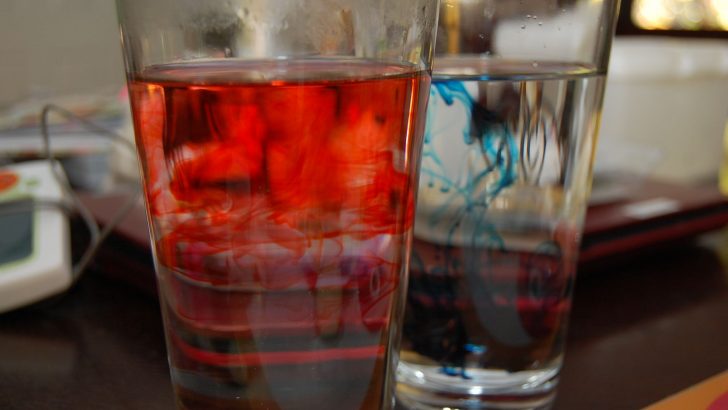Children’s Corner
Some people rather hot temperatures while others prefer cold, it’s a matter of personal preference at the end of the day but a scientific mind might want to explore how hot and cold temperatures react with certain substances.
Our bodies are made up of more than 60% water, so why not have a look at how water reacts to changing temperatures? Water molecules change how they act when heat is involved and this makes for a very interesting experiment!
This experiment is great for testing if hot water molecules really move faster than cold ones. Pour some water, drop in some food colouring and compare results.
Apparatus
– A clear glass filled with hot water
– A clear glass filled with cold water
– Two different types of food colouring
– An eye dropper
Method
– Fill the glasses with the same amount of water, one cold and one hot
– Put one drop of food colouring into one glass and the other colour into the next glass as quickly as possible
– Watch what happens to the food colouring
What’s happening?
If you watch closely, you will notice that the food colouring spreads faster throughout the hot water than in the cold. The molecules in the hot water move at a faster rate, spreading the food colouring faster than the cold water molecules which move slower.
You should notice the food colouring in the warm water spreading out faster than the food colouring in the cold water. If you didn’t observe this, try making your cold water a little colder and your warm water a little warmer. Also make sure you add the food colouring to each glass at the same time.
Water is made of molecules (two hydrogen atoms and one oxygen atom stuck together). Molecules in a liquid have enough energy to move around and pass each other. This is why water can flow and take the shape of the glass you pour it into. The molecules in solids, like ice, don’t have enough energy to move around very much so the solid keeps its shape. Molecules in a gas have lots of energy and spread out even more than molecules in a liquid.
Warm water has more energy than cold water, which means that molecules in warm water move faster than molecules in cold water. The food colouring you add to the water is pushed around by the water molecules. Since the molecules in warm water move around faster, the food colouring spreads out quicker in the warm water than in the cold water.


 Chai Brady
Chai Brady
